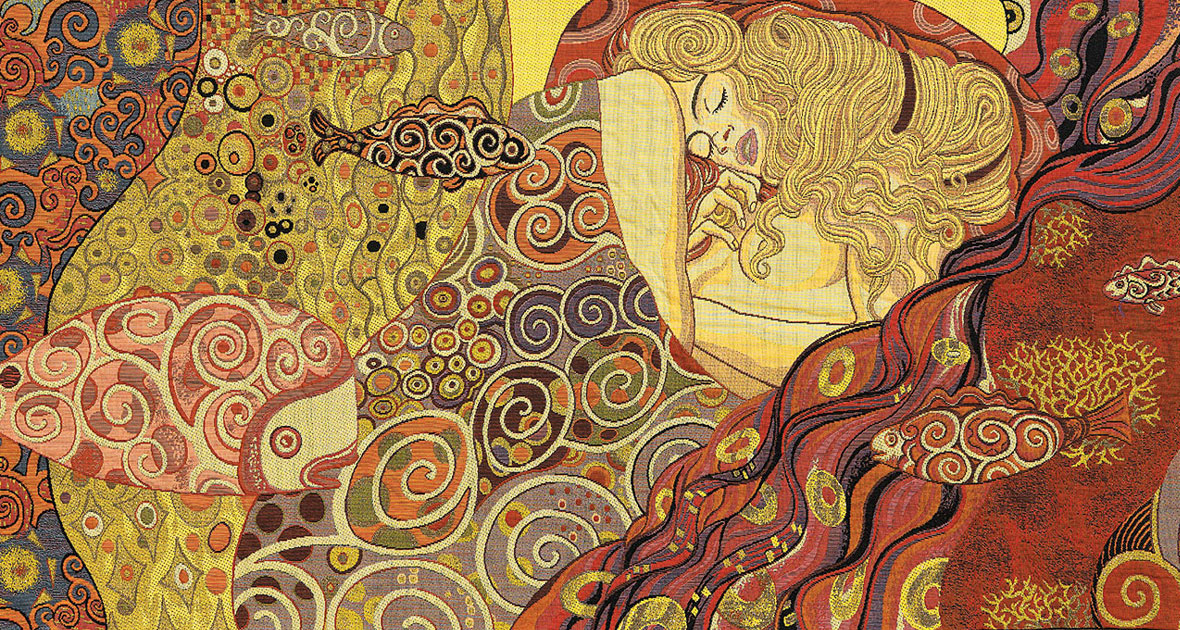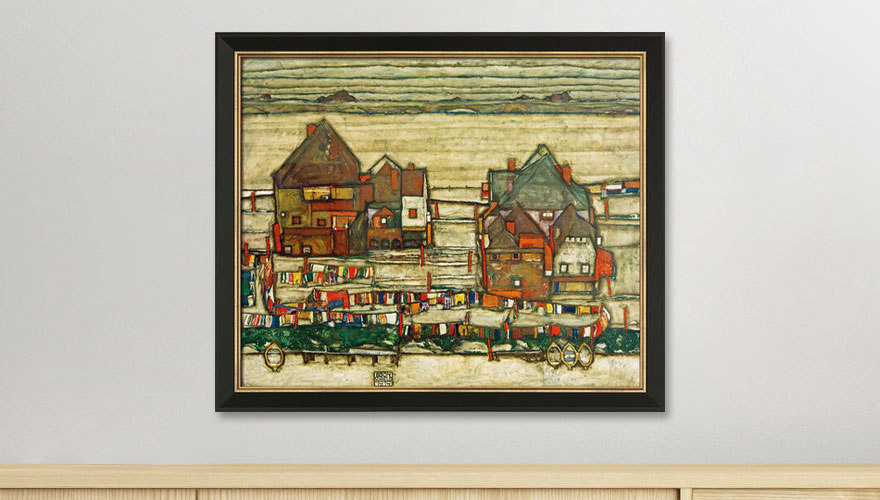
Vienna Secession - The Pioneers of the Austrian Avant-Garde
"To every age it's art. To art its freedom": This was the slogan of the "Vienna Secession" - the artists' association that was to have a lasting influence on art in Austria and the rest of Europe at the turn of the 20th century. Around 50 artists, architects and designers joined forces in Vienna in 1897 to counter the conservative establishment with a modern understanding of art. They planned a radical renewal that would make Vienna's art progressive, courageous and open to all styles and developments.
A Plea for Modern Thinking in Art
At the turn of the 19th and 20th centuries, art in many European countries was in a state of awakening. In many places, artists' associations were created to overcome the traditional conception of fine art. The same was true in Austria. Here, the conservative "Genossenschaft der bildenden Künstler Wiens" (Cooperative of Fine Artists of Vienna) had set the guidelines for art policy at that time. However, many young Viennese artists did not like the "Genossenschaft's" strongly academic and historicist understanding of art and no longer saw themselves represented - especially at exhibitions. As a reaction, on 3 April 1897, about 50 progressive artists, architects and designers, including Gustav Klimt, Koloman Moser, Otto Wagner, Josef Hoffmann, Joseph Maria Olbrich and Carl Moll, founded an independent artists' association called the "Vienna Secession". Their goal was a modern art policy that would take into account both the avant-garde of their own country and international artists. Art Nouveau served as their model.
The "Secession Style" - Austrian Art Nouveau
Stylistically, the Viennese Secessionists were committed to the Art Nouveau style that was becoming increasingly popular in Europe at the turn of the century. The characteristic of this movement was the idea of unity between fine art, architecture, crafts, and design. Art was no longer to take place only in museums but was to be omnipresent in people's everyday lives. The concept had its origins in the British "Arts and Crafts" movement. There was a focus on high quality and a critical view of mass production, which became possible due to industrialisation. The design style of Art Nouveau was modern and open-minded, and at the same time, the focus shifted back to nature as a model. The typical features were floral motifs, ornaments, flowing lines and geometric and abstract decorations. These design elements were applied to the most diverse genres - paintings, sculptures, architecture, furniture, jewellery and glassware. Due to the strong influence of the Viennese Secession on Art Nouveau, this design style was soon referred to in Austria only as the "Secession style". Moreover, as a result of the Secession's lively activities, Vienna developed into a European centre of Art Nouveau within a few years.

An Infrastructure for Modernism: An Exhibition House, an Art Magazine and Lots of Exhibitions
The Secessionists immediately got back to work after their founding. The first important steps were taken as early as 1898: The first group exhibition was organised in Vienna, an exhibition house was built according to the designs of the architect Joseph Maria Olbrich and the art magazine "Ver Sacrum" was published for the first time, becoming the central organ of the Secession. Here, contributions were published by representatives of Viennese Art Nouveau as well as by avant-garde poets and literary figures from Austria and abroad. The main focus of the Secessionists' work, however, was the organisation of exhibitions - with the participation of both domestic and foreign artists. In 1900, for example, they presented the English Arts and Crafts movement to a broad public for the first time. This was followed by exhibitions of ancient Japanese art and the French Impressionists, among others. One of the most famous events to this day is the "Beethoven Exhibition" from 1902. Josef Hoffmann had conceived what today would probably be called a multimedia show for the great composer, with paintings, mosaics, reliefs, sculptures and furniture by 20 Secession artists. Gustav Klimt's famous 34-metre-long Beethoven frieze and Max Klinger's Beethoven sculpture were shown in this exhibition set.
1905: Split of the Vienna Secession
In its original form, the Vienna Secession only existed until 1905. In that year, numerous artists, and architects, including Gustav Klimt, Koloman Moser and Carl Moll, had left the artists' association, which they had partly co-founded. The decisive factor for the split is said to have been differences of opinion about the artistic direction, although the specific reasons vary according to the source. Some say that the style was considered too naturalistic, while others discuss the role of the applied arts in the Secession concept. For the Vienna Secession, the wave of members leaving was a great loss. After the breakup, the renegade Secessionists founded a new group of artists known as the "Klimt Group", which in turn was highly successful, including Egon Schiele and Oskar Kokoschka.

The Vienna Secession Today
The spirit of the Vienna Secession lives on to this day. The "Vereinigung bildender KünstlerInnen Wiener Secession" (Association of Visual Artists Vienna Secession) follows in the tradition of its legendary predecessor and runs an exhibition house for contemporary art of worldwide standing at the old location of the Vienna Secession. Just like back then, the house is still independent and dedicated exclusively to the artistic avant-garde. In 10 to 15 exhibitions a year, it is intended to provide space for currently relevant developments in international and Austrian art. Among the artists who have been shown here in recent decades are Peter Doig, Ed Ruscha, Anthea Hamilton, Nicole Eisenman, James Lee Byars, Sarah Lucas, Thomas Hirschhorn and Albert Oehlen.
